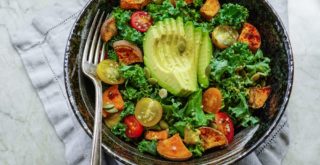Selecting healthy foods is a core step in making sure that you are always eating a nutritious meal, but the way that you prepare these foods can also be a defining factor. For instance, a zucchini is a very healthy vegetable to eat, but if you lightly sauté it in olive oil, you’ll be doing something much more healthful and weight loss friendly than if you were to deep fry it.
As you can see, what you actually do to your foods as you get ready to put them on your dinner plate can have a considerable impact on what you’ll get out of them. Learning to slash calories from any recipe could save you a lot of unwanted fat on your body.
Your first step to making sure that you’re lightening up your cooking and making sure that it is as healthy as it can be is to consider a recipe to be a suggestion as opposed to a strict path to follow. Look over your recipes before you prepare them and check to see if there are ways for you to slash calories from the original directions. You may be shocked at how often you can do this and how easy it really is. Spot excesses in oils and butter, cheeses, and sugars. Those are typically areas where you can reduce without sacrificing flavor.
Once you’ve done that, check out the following methods to slash calories from virtually any recipe:
• Sautee in low sodium veggie broth instead of cooking oil or butter. This lets you add a huge amount of flavor, will give your ingredients the moisture that they need, but will also take the calories of a recipe down by several notches.
• Skip the chicken skin. A chicken breast is a wonderful option as a part of your meal because it is easy to flavor but is quite lean at the same time. Three ounces of chicken breast is a teensy 100 calories, but keeping the skin on will spike that amount by 50 percent! Cook the meat with the skin on to keep the moisture locked in, but remove the skin before you eat it to keep your fats and calories down. Consider keeping it with the bones so that you can make a delicious homemade chicken stock that you can use as an alternative to the veggie stock for sautéing your food.
• Use citrus juice. If you want to brighten up your meals and add lots of flavor without boosting calories and sodium, give your steamed veggies a squeeze of citrus instead of using salt or a dressing. Lemon, lime, or even orange can work very well. Slices of these fruits also help to flavor baked fish in an entrancing way.
• Be selective about cheese. Whenever possible, opt for a cheese with a more intense flavor. The more powerful the taste, the less you’ll need to satisfy your taste buds!




















